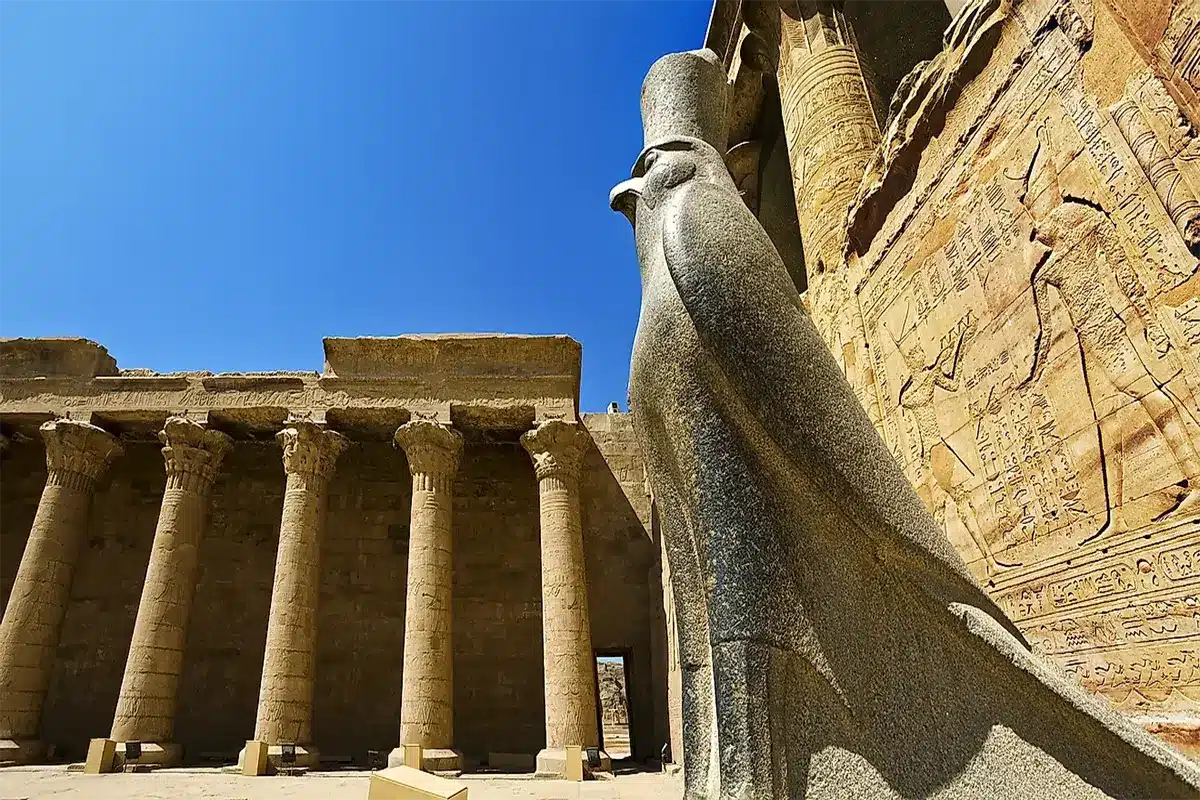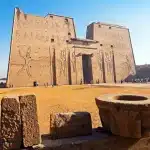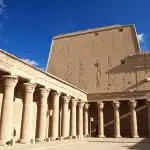The Temple of Hours in Edfu is one of the most beautiful ancient Egyptian constructions all over the country. Famous for being the best-preserved example of the architecture of the Ptolemies in Egypt, the Temple of Horus in Edfu is also featured with its huge size. It is the biggest in Egypt, only coming in the 2nd place after the huge magnificent Karnak Complex of Temples.
Situated in the West Bank of t the River Nile about 120 kilometers to the North of the charming city of Aswan, the visit to the Temple of Horus in Edfu is among the most wonderful visits included in the itineraries of numerous Nile cruises that sail from Luxor to Aswan and vice versa. Some tourists, nevertheless, would visit the temple by bus, coming from Luxor in the North or Aswan in the South.
The building of the huge Temple of Horus in Edfu began at the beginning of the 3rd century BC, exactly in the ruling period of Ptolemy VII in an attempt to have architectural achievements similar to the Pharaohs. In fact, the temple was built in the same spot that hosted a much older temple dating to the Old Kingdom of ancient Egypt. The works took more than 200 years to be finalized in the year 57 BC. It is worth mentioning that the cult of Horus was quite common and spread in Egypt at the time.
Trying to have huge temples dedicated to ancient Egyptian gods, the Ptolemies copied many features and aspects from the Pharaonic temples at the time. This included huge pylons at the entrance of each section of the Temple of Horus in Edfu. The large open yard is full of huge wonderfully carved and decorated pillars with huge stone capitals.
However, the pillars are never to be compared to those of the hypostyle hall visitors explore afterwards in the amazing Temple of Horus in Edfu. Among the most famous features of the temple is the two large statues made out of pure granite located at the entrance of the hypostyle hall.
Leaving the hypostyle hall, the guests would then explore another similar section of the Temple of Horus in Edfu with twelve huge pillars and many various chambers for various usages.
Located at the end of the temple, the same as in many various ancient Egyptian temples, there is the sanctuary of the Temple of Horus in Edfu. This used to accommodate a large sarcophagus. Moving forward, there are many chapels and chambers with wonderful wall colors and scenes from ancient Egypt. Several scenes display the king, Ptolemy VII achieving victory and presenting offerings to the gods of ancient Egypt.
Among the most distinctive features of the Temple of Horus in Edfu is the Nilometer, the gadgets the ancient Egyptians used to measure the level of the water in the River Nile. This is was vital to the Pharaohs in order to decide the seasons of cultivations and harvests.





0 Comment